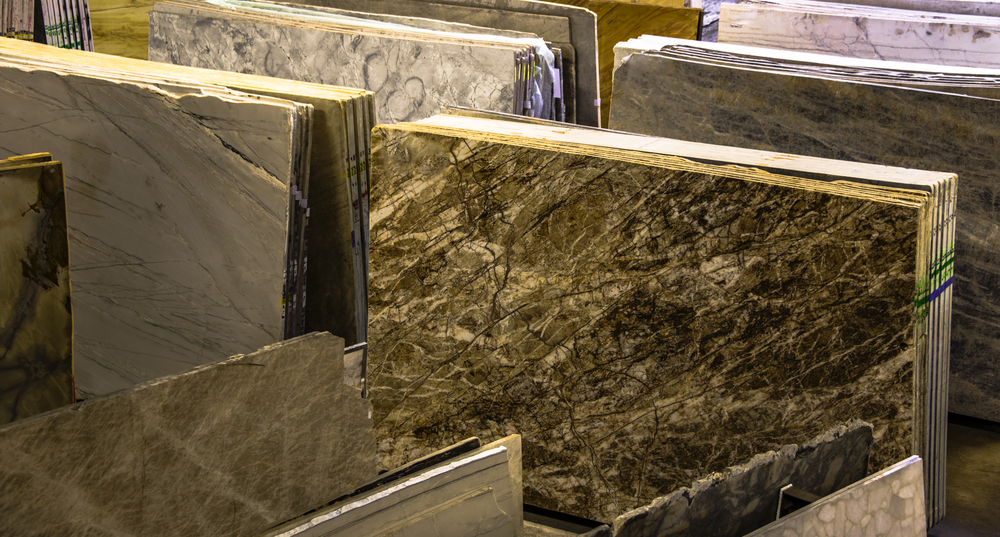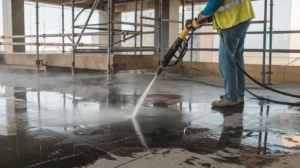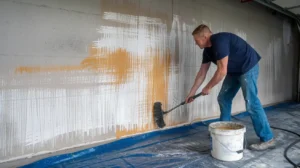Granite countertops are renowned for their durability, elegance, and timeless appeal. But how exactly are these stunning pieces of natural stone transformed from raw blocks into the polished surfaces we admire in kitchens and bathrooms?
This article will take you through the step-by-step process of how granite countertops are made, from the initial quarrying to the final installation. Understanding this process gives you a greater appreciation for the craftsmanship and technology involved in creating these beautiful countertops.

Step 1: Quarrying and Cutting Into Slabs
The journey of granite countertops begins deep within the earth, where raw granite blocks are extracted from quarries. Granite quarrying is a meticulous process that requires precision and expertise. The first step involves locating a quarry site with high-quality granite deposits.
Once identified, heavy machinery and explosives are used to extract large blocks of granite from the earth. These blocks can weigh several tons and are transported to nearby facilities for further processing.
The next stage in the process is cutting granite slabs from these massive blocks. Advanced stone processing machinery like wire saws, gang saws, and diamond wire cutters are used to slice the blocks into slabs of varying thicknesses.
This granite cutting process requires accuracy to ensure that the slabs are uniform and free from defects. The size and thickness of the slabs are determined based on their intended use, whether for countertops, flooring, or other applications.
Step 2: Polishing the Slabs
Once the slabs are cut, they undergo a surface finishing process to enhance their natural beauty and prepare them for use as countertops. Polishing granite countertops involves several stages, each designed to bring out the stone’s luster and color.
The slabs are fed through polishing machines equipped with rotating pads that apply abrasives of varying grits. This process smooths the surface, removes any roughness, and brings out the granite’s natural shine.
During this stage, polishing and sealing granite is essential to protect the stone from stains, scratches, and other damage. Sealants are applied to fill the pores of the granite, making it less porous and more resistant to liquids and stains. The result is a smooth, glossy surface that enhances the stone’s natural beauty and ensures long-lasting durability.
Step 3: Shipping and Transporting
After polishing, the slabs are carefully inspected for quality and any imperfections that may affect their appearance or performance. Quality control in granite fabrication is critical to ensure that only the best slabs are selected for use in countertops. Once approved, the slabs are packed and prepared for shipping.
Transporting granite slabs requires careful handling to avoid damage. The slabs are securely packed in wooden crates or metal frames and shipped to distributors or fabrication facilities. Sustainable granite sourcing is also considered during this stage, as many companies strive to minimize their environmental impact by using eco-friendly practices in transportation and sourcing.
Step 4: Fabrication
The fabrication process is where the granite slabs are transformed into custom countertops. Countertop fabrication techniques involve cutting the slabs to specific dimensions, shaping the edges, and adding cutouts for sinks, faucets, and other fixtures. This step requires a combination of precision stone cutting and skilled craftsmanship to create countertops that fit perfectly in their designated spaces.
Edge profiling granite is another critical aspect of fabrication. The edges of the countertops can be shaped in various profiles, such as beveled, bullnose, or ogee, to add a decorative touch. The choice of edge profile can significantly impact the overall look of the countertop, making it a key consideration in the design process.
Step 5: Installing the Countertops
Once the fabrication is complete, the countertops are ready for installation. The installation process for granite countertops involves careful measurement, leveling, and securing the slabs in place. Professional installers ensure that the countertops are correctly aligned and supported, with seams and joints carefully sealed to create a seamless appearance.
During installation, the countertops may undergo additional polishing and sealing to ensure a perfect finish. Custom countertop design elements, such as backsplashes and integrated sinks, are also incorporated at this stage. The final result is a stunning, durable surface that adds value and beauty to any space.
Step 6: Enjoying Your New Countertops
After the countertops are installed, it’s time to enjoy the benefits of your new granite surfaces. Granite countertops are not only visually appealing but also highly functional. Their durability, resistance to heat, and low maintenance requirements make them an excellent choice for kitchens and bathrooms.
Regular care and maintenance, such as cleaning with mild soap and water and periodic resealing, will keep your countertops looking beautiful for years to come. With proper care, your granite countertops will continue to be a focal point in your home, providing a lasting return on your investment.
Conclusion
The process of how granite countertops are made is a fascinating journey that begins with quarry extraction methods and ends with the installation of a beautiful, custom-made countertop in your home. From the initial quarrying and cutting of slabs to the final installation, each step involves precision, craftsmanship, and attention to detail.
Understanding this process not only highlights the value of granite countertops but also underscores the skill and expertise required to create these stunning surfaces. Feel free to contact us for any type of services or query like how granite countertops are made.
FAQs
What Is The Process Involved In Making Granite Countertops?
Granite countertops are made through a series of steps including quarrying, cutting, shaping, polishing, and sealing. First, granite blocks are extracted from quarries, then cut into slabs and polished to achieve a smooth surface. Finally, the slabs are fabricated into countertops according to specific measurements and sealed for protection.
How Is Granite Extracted From Quarries For Countertop Production?
Granite is extracted from quarries using a combination of drilling, blasting, and cutting techniques. Once the blocks are removed, they are transported to fabrication facilities for further processing.
What Tools And Equipment Are Used In The Fabrication Of Granite Countertops?
Fabrication of granite countertops typically involves the use of saws, polishers, routers, and other specialized machinery. These tools are used to cut, shape, and polish the granite slabs to the desired specifications.
What Types Of Finishes Are Available For Granite Countertops?
Granite countertops can be finished in various ways, including polished, honed, and leathered finishes. Polished finishes have a glossy surface, while honed finishes are matte and smooth. Leathered finishes offer a textured surface with a soft sheen.
How Long Does It Take To Fabricate And Install Granite Countertops?
The time it takes to fabricate and install granite countertops can vary depending on factors such as the size of the project and the availability of materials. On average, fabrication can take anywhere from a few days to a few weeks, followed by installation, which typically takes a day or two.
Are There Any Environmental Considerations In The Production Of Granite Countertops?
Quarrying and processing granite countertops can have environmental impacts such as energy consumption and waste generation. However, many companies are implementing sustainable practices such as recycling water and using renewable energy to minimize their environmental footprint.






